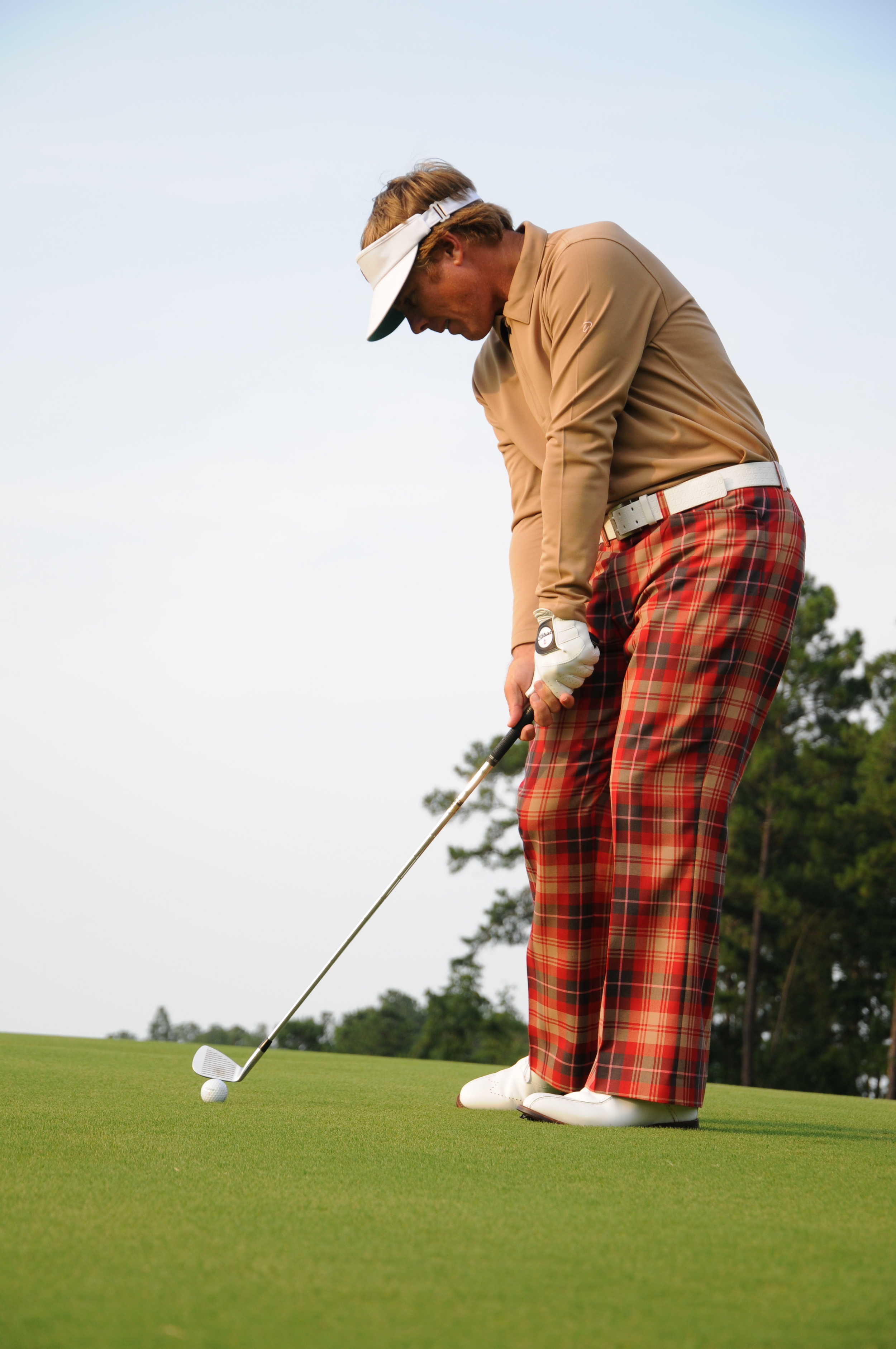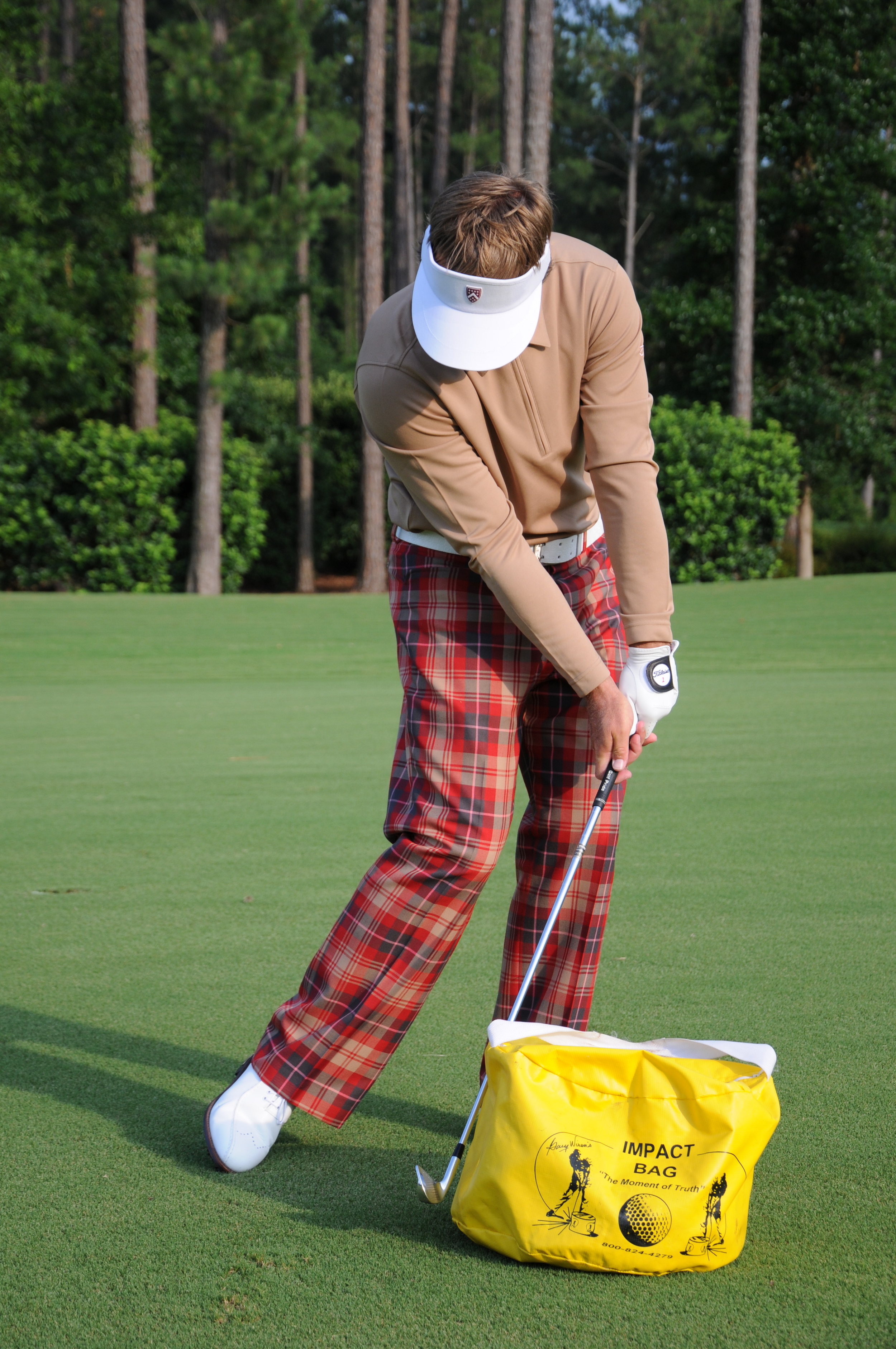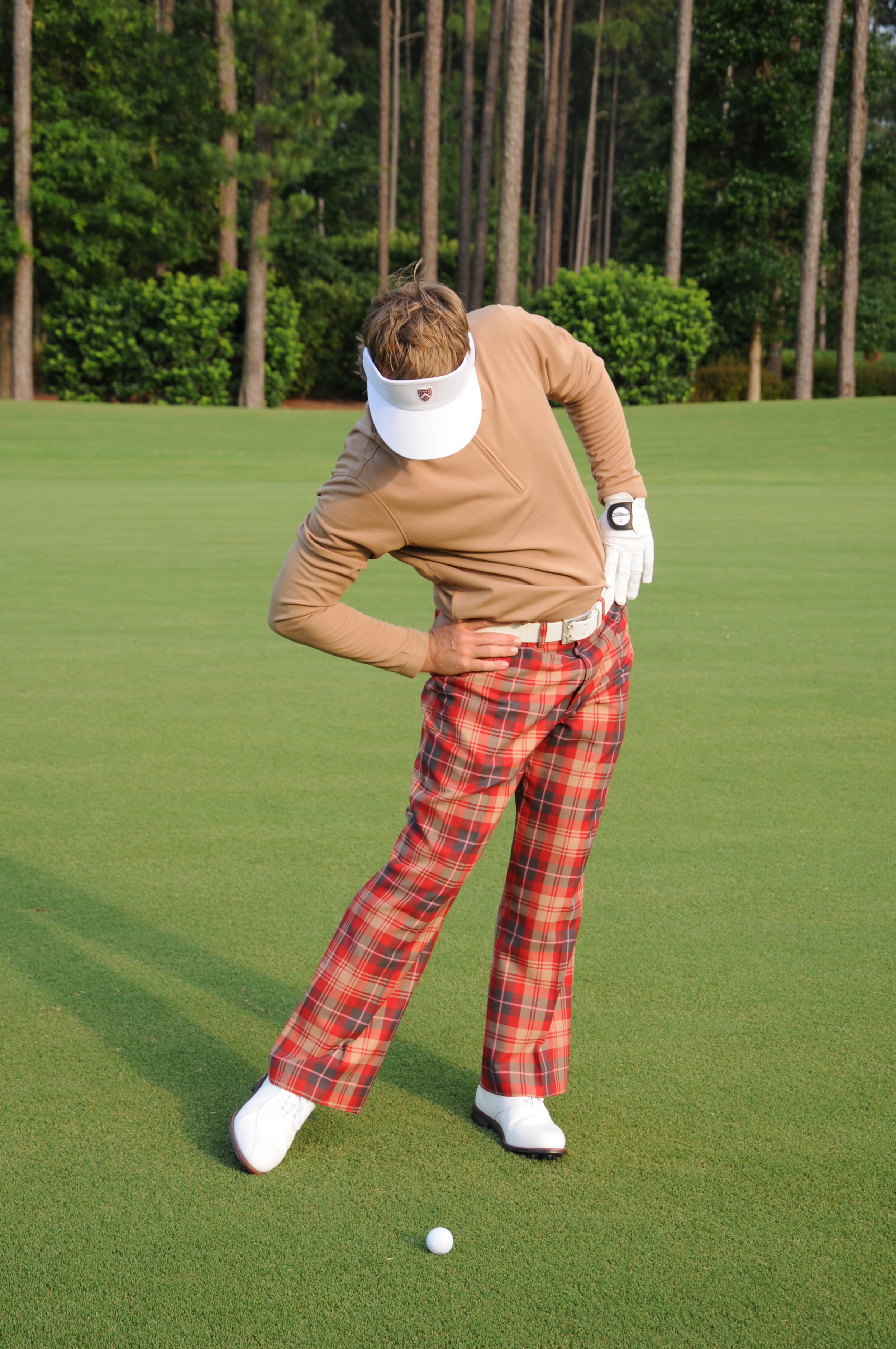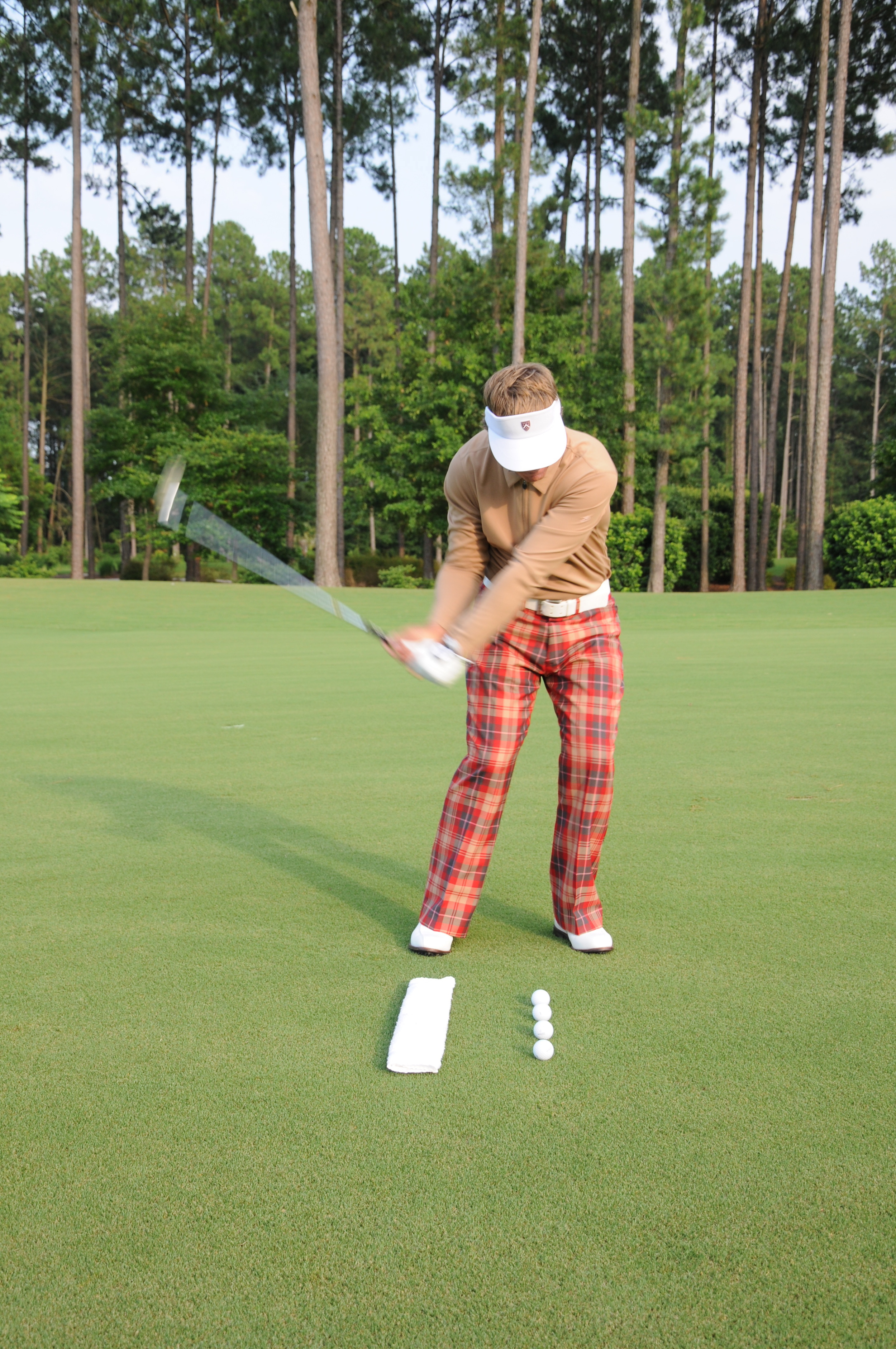I've got all the shots I'm just not sure when I'm going to hit them!

Or what about a shank, a top, a blade, a whiff? Okay, there are only nine proper shots that a golfer needs to master. They are the low draw, straight one and fade; the regular height draw, straight one and fade and the high version of each option. Tiger Woods incorporates all of the above shots into his practice sessions - shouldn't you?
Try this fun and challenging exercise in your next practice session:
- Be sure to use an alignment string that is set up to a target within range of a 7 iron.
- Keep the size and pace of your swing at around 75%.
- Start on the 'ground' floor (low) with the shot shape that is most comfortable for you (draw or fade)
- Stick with the low shots until you have hit one of each. Keep in mind the draws/fades should start at the target and curve away from it.
- Work up to the medium and high trajectory shots until you have also hit one of each.
- Keep track of the number shots required to complete the SLAM (all nine shots) and set yourself a target score for the next time you practice. The fewer shots, the better.
This exercise will illustrate to you the type of shot that is most difficult for you to hit. (Hey, some golfers just don't know!) Practice the most difficult shot until you can pull it off on the course. This will serve to neutralize your swing and allow you to ultimately hit the ball straighter.
If you struggle with slicing the ball, practice hooking the ball! If you hit the ball inordinately high, practice hitting low punch shots all day long until you can hit it at a regular trajectory. Get to a point where your extreme misses are less extreme than before and the ball will stay closer to the intended target and your scores will do the same!
Over the upcoming week I'll address the techniques required to hit the ball low or high and with a draw or fade. Check back!
Things to Ponder:
- At the Texas Open this Lance Ten Broeck, both caddied for Jesper Parnevik and played in the event. They both missed the cut but what must it feel like as a player when your caddie beats you! (Ten Broeck 141 vs. Parnevik 144)
- The PGA Tour must be struggling to find players. I can think of 20 golfers better than a caddie and a dozen washed up golfers from the 80's to play in a PGA Tour event!
- And this little interesting snippet from www.geoffshackelford.com
John Huggan with this nugget from last week's Players:
Not only did the diminutive leader of the world's richest circuit manage to mangle the champion's name, calling him "Heinrik" more than once, Finchem's minions were apparently hard at work pressuring host broadcaster NBC into not mentioning just how many Fed-Ex Cup points the Swede picked up along with the $1.7million first place cheque. Embarrassingly, that number is nil, due to the fact that Stenson (who will no doubt have welcomed the sizeable boost to his bank balance in the wake of losing a goodly chunk of his fortune amidst the recent Stanford fiasco) thinks he can muddle by without being a PGA Tour member.
- Zach Johnson is quietly becoming a top five player in the world. Gutsy!
















